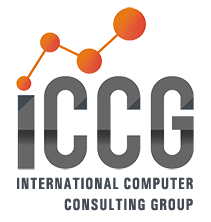For supply chain professionals in your organization to receive the flexibility and agility they need to increase speed, drive down costs, and satisfy customers, there are four critical components your company must possess. These include real-time visibility, predictive insights, prescriptive decision support, and real-time collaborative execution, all of which can be achieved through the implementation of supply chain control tower.
Deploying a network model to achieve real-time, end-to-end visibility
Visibility is the foundation of every control tower capability, with all advanced decision making and responses within the execution window relying upon the quality and timeliness of visibility. Keeping order, shipment, and inventory status updated for all parties to see in real time is critical to success., but this often proves a core challenge for control towers, since highly dynamic supply chains can change at a rate of over 50 changes per second.
Visibility that captures GPS & IoT data can provide real-time updates to orders, shipments, and products. Many planning and logistics control towers offer this visibility but lack the cross-domain alignment for decision making.
Analytics control towers attempt to pull data together to provide a dashboard view of the supply chain, but these still rely heavily on batch updates and data crunching. Neither approaches provide the end-to-end breadth of visibility or the real-time status of supply chain operations needed for optimal response.
While many planning control towers compensate by building complex data models or expanding unstructured data lakes, there is only one way to ensure real-time, end-to-end visibility: connecting all internal and external supply chain parties to a single platform in order to generate a single source of truth for orders, shipments, and inventory that is always up to date and available to all parties.
This means utilizing a multi-tenant, multi-enterprise business network that leverages a single data model to connect all parties to digital supply chain data. Changes and updates are reflected immediately in the network and visible to all relevant parties. High-quality, real-time, shared data is the necessary cornerstone of building a data-centric supply chain that is poised for digital transformation.
Using predictive alerts for proactive decision making
Change happens and can’t be avoided. Despite improvements in supply chain planning, companies cannot perfectly plan for an imperfect world, but relying on early detection of changes can help your organization control the effect it has upon your supply chain.
For example, when machine learning algorithms are applied to real-time visibility, they can help predict late shipments before companies receive carrier notices or worse, the customer complains. Supply chain professionals with visibility to network inventory levels can monitor demand and supply balance to predict potential stockouts in time to prevent lost sales.
Predictive alerting is an essential capability to providing supply chain professionals with the agility they need to act quickly, but the massive amounts of complex data involved can quickly overwhelm those tasked with running your supply chain.
An essential component of predictive technologies is separating true, actionable signals from noise. Machine learning algorithms that incorporate historic supply chain data as well as external data sources help determine what is truly an actionable signal versus one that can be ignored. This allows focus to be directed to the most important tasks and avoids losing time on events that don’t require action.
Harnessing intelligent decision support
The ability to recognize a crucial alert is only half the battle, for making the right decision requires decision support capabilities for approaching the resolution in the most intelligent manner.
- Aggregation is helpful to identify common-cause events impacting multiple shipments and orders. By bundling total value at risk or total customer exposure, supply chain professionals get a truer picture of the comparative magnitude of each resolution action.
- Prioritization is essential to align resolutions with company strategy, whether it be cost reduction, velocity, customer service, or some combination.
- In-context information is vital to making quick decisions. Bringing relevant information needed to make decisions to the supply chain professional and eliminating time-consuming calls and emails for updates liberates time from data gathering and allows for instant analysis.
- Prescription takes decision making to the next level by leveraging real-time network insights and intelligence to present the next best steps according to both the real-world condition of the supply chain and the company’s business goals.
Finding successful resolution through collaborative execution
Advanced analysis of events and available resolutions requires swift execution. Given the dynamic nature of supply chains, delays of days and weeks between analysis and execution can make certain resolutions unavailable, throwing the entire process back to square one, or worse, too late. Companies need to align quickly both internally and with external suppliers, carriers, and forwarders to ensure that all parties take timely action.
Decisions must be swift, collaborative, and immediately reflected, but relying on traditional communication and batch updates to systems puts successful resolution at risk. A connected supply chain network, with shared data, processes, and insights leads to the most effective resolutions, because all parties can collaborate directly with each other in-network from a single source of the truth in real-time.
Learn more about how ICCG can help. Questions about how ICCG can help you? Let us know here.


